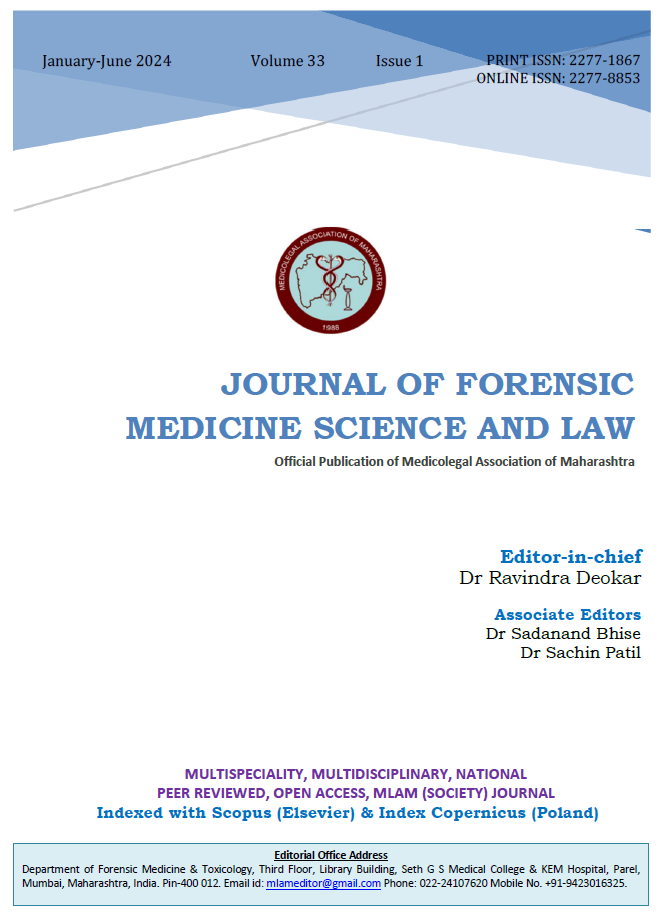Abstract |
Introduction/Background/Aim: This retrospective study of 1988 Ahmedabad airplane crash is aimed to determine the role of Forensic Medicine Expert in medico-legal investigation of a mass disaster. The larger aircraft, with capacity for more passengers, make such investigation a study in mass disaster planning, procedures and logistics. Materials & Methods: Medico-legal autopsy reports and accompanying police papers of victims of this airplane crash are evaluated and findings are compared with the studies having similar objectives. Results: Most of victims (84 %) were identified by the secondary methods of identification (Personal belongings especially metallic ornaments). 8% victims were identified by anthropological data obtained during autopsy e.g. age, sex, stature etc. Old scar and congenital deformities were useful in 4 % cases. Dental method was useful in 3 % cases and 1 case was identified by the lower limb prosthesis. Maximum number of deceased had burns (76.74 %), followed by head injury with skull fracture (54.26 %). Fractures of tibia and fibula are also seen in 42.63 % cases. Most common cause of death was burns (41.86 %), followed by multiple injuries to body (32.55 %). 15.50 % victims were died due to burns associated with multiple injuries. Conclusions: In airplane crash disasters, Forensic Medicine Expert has three major functions: identification of victims, documentation of their injuries and disease process, and correlation of these findings with the aircraft and crash site evidence. It is incumbent on individual expert as well as Forensic Medicine Department in their own and the public interest to have forward planning for such an eventuality. |
















